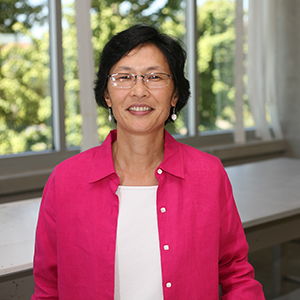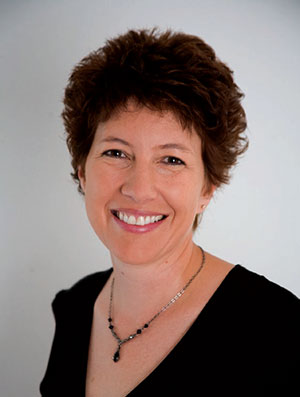Open Voices is taking the opportunity to get to know some of the different team members from our National Awards grantee projects. You can find previous interviews with other team members here.
Neither Nancy Chikaraishi, AIA, or Traci Sooter, AIA , LEED AP, are strangers to applying their skills as architects to help their local community. Both based out of Drury University’s Hammons School of Architecture, the team has helped instill the values of giving back in their students through projects helping to rebuild the nearby city of Joplin, MO following the devastating tornado in 2011.

While working together to facilitate the grant for the Landscapes of Resilience project, Chikaraishi and Sooter are making the major moves toward beginning to turn the designs for the park in Joplin into a beautiful and healing reality. The two experienced architects and professors took the time to talk with us on the plans for this project and how it has been progressing thus far.
Open Voices: What roles do you envision playing in the next stages of the Landscapes of Resilience project?
Nancy Chikaraishi: Our main role is project coordination of the build project in Joplin, MO. The other role is grant administration; we’re facilitating the grant through Drury University. We have worked all summer to create drawings with the landscape architects, and we just met with the Director of Joplin City Parks and Recreation to talk about our roles in building this project in the fall.
We teach at Drury University and we have a class this fall that will be designing and building a number of elements in the park. We’re moving into the build phase and dealing with bids from different contractors. We are excited to see these ideas become a reality.
Open Voices: It sounds like the faculty and students at the Hammons School were all very involved with rebuilding after the tornado in Joplin, how has the relationship been built between the people coming in to help Joplin and the people who were directly affected by the destruction?
Traci Sooter: It’s been fantastic. You have to be really careful going into a disaster area, there’s a lot of trauma, and they’ve been through a lot. You have no idea when you’re talking with someone whether they’ve lost a loved one, their home, their work, or are a survivor. That was something we were very aware of when we went down there.

They have been amazing to us, the people of Joplin. We feel that we’ve built long term personal connections with the people we’ve worked with. When we work in Joplin, folks seem to appreciate our students and we certainly appreciate the opportunity and warm welcome we receive from the community. After the tornado, Joplin stood up and pulled up their bootstraps and got to work, but yet they greatly appreciated all of the help. The last project that we did was the Volunteer Tribute in Cunningham Park dedicated to the over 170,000 volunteers who came to help Joplin after the tornado.
Chikaraishi: I absolutely agree. When our students are out there meeting people in the community and talking to them, it’s not just us telling them that they are doing good, they are seeing and feeling that. That is something that lasts for their lifetime.
Open Voices: You both come from different backgrounds, Traci with experience in construction management and LEED design, and Nancy with an artistic influence, how do you two plan on bringing those different expertise together in this project?
Chikaraishi: I practiced as a licensed architect for about 15 years before going into teaching, and I’ve always loved drawing and doing artwork. I feel I’m using the skills I used in practice for 15 years.
Sooter: We are a great team. We work really well together both with our differences and similarities being architects, but her practicing more than I did. We complement each other really well. It’s a great collaboration.
Open Voices: How do you, as professors at an architecture school, help your students develop an appreciation for nature when they are looking to influence communities through built environments?
Sooter: That is the main task for this class. Students may intuitively feel better when they are in nature, but not recognize it or be able to articulate it yet. The number one goal is to understand that nature does make a difference, it does help heal, and making sure they feel it so then they can design understanding that fact, not just in this project but in their careers.
Chikaraishi: While we’re an architecture school engaged with the built environment, the natural environment also has similar design elements. You have trees for verticality. You can have a sense of enclosure through dense plantings or the canopy of a tree. You can create those same elements that we have in architecture, but with nature. It means having to think about them in a slightly different way, but it’s still creating and designing space.
When you approach the site for a building, all of those things are elements in your experience of getting to a place. We have those in our design. We have the portal, the entry way into the site, and it’s built around these frames reminiscent of the three houses that were torn away by the tornado. Then there’s the path to make your way through the park. There’s also the element of surround through the butterfly garden. We have a circular ring of plants that attract butterflies, because of the stories children told of these butterflies and butterfly people that were saving them during the storm.
Open Voices: What sort of data are you hoping to gather from this research of the communities participating in the Landscapes of Resilience project?
Chikaraishi: At the second anniversary of the tornado a professor of English and his students came to Joplin and collected stories of residents and their experience with the tornado. They are going to transcribe these stories, and we are still collecting them on our website. They are eventually going to be put into a museum in Joplin.
We are part of a trans-disciplinary team led by Cornell University and the US Forest Service. The social science researchers on this project will analyze the data between the site in Joplin and the site in New York City, looking at similarities and differences in social and ecological resilience based on the different stressors of a tornado and a hurricane . Also Jennifer Silva Brown [a professor of psychology at Drury University] is doing research on how individual residents of Joplin are dealing with the disaster through different resilience and coping styles.
Open Voices: Is there anything else you’d like to add?
Sooter: It has been an incredible learning experience. It is a very diverse team. When you collaborate, the energy is fantastic.
Chikaraishi: It has been amazing to get to know people in other disciplines; getting to share and learn together. This has become something much bigger than I ever expected. Then we will get to see how it helps this community heal.
